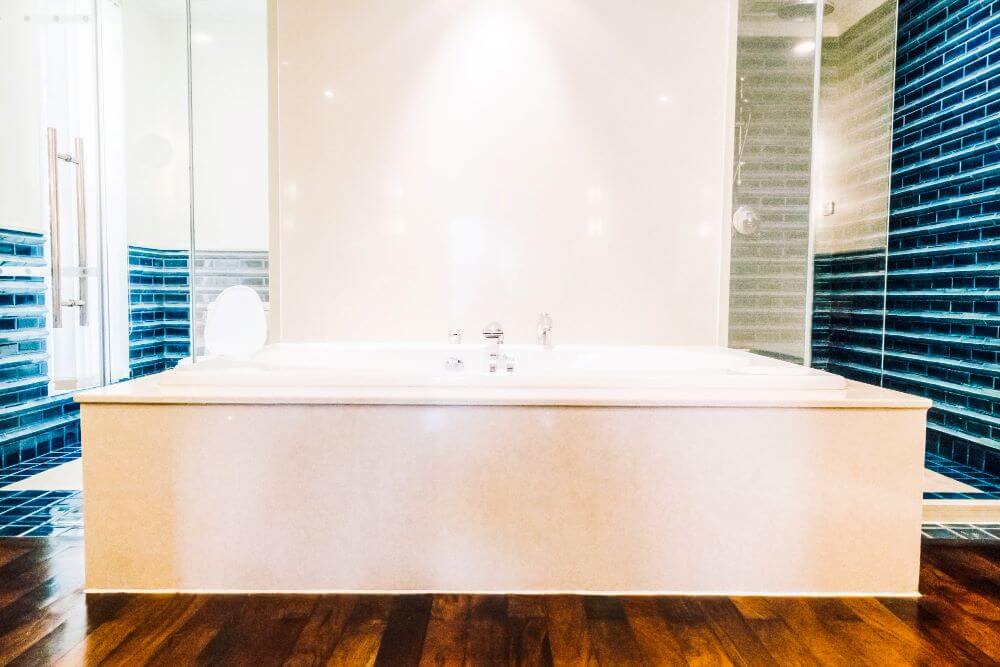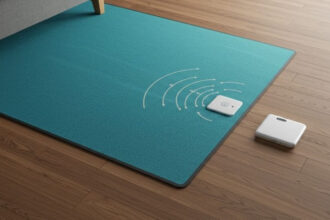A modern bathroom needs flooring that can handle daily use while still looking stylish. Many homeowners want a surface that balances durability, comfort, and design without stretching the budget. Vinyl flooring offers a practical solution that meets these needs and fits seamlessly into today’s bathroom spaces.
This type of flooring has gained attention as a smart alternative to traditional tiles or stone. It combines water resistance with a wide range of design options, making it suitable for both large family bathrooms and smaller en-suites. As a result, more people now see vinyl as a dependable choice for creating a bathroom that feels both functional and inviting.
1. Highly water-resistant, ideal for humid bathroom environments
Bathrooms often face high levels of moisture from showers, baths, and daily use. Traditional flooring materials can absorb water, which may lead to warping or damage over time. Vinyl flooring resists moisture, making it a practical choice for these damp conditions.
Unlike wood or laminate, vinyl has a protective surface that prevents water from seeping through. This feature helps maintain the floor’s shape and appearance, even after years of exposure to humidity. It also reduces the risk of mould growth beneath the surface.
Many homeowners choose Bathroom Vinyl Flooring because it combines water resistance with a wide range of styles. This allows a bathroom to stay functional without sacrificing design.
In addition, vinyl floors are easy to clean after spills or splashes. A simple wipe is often enough to remove water, which makes them more convenient than porous materials that require sealing or special treatment.
2. Affordable compared to traditional tile or stone flooring
Vinyl flooring usually costs less than ceramic tile or natural stone. The lower price comes from both the material itself and the simpler installation process. This makes it a practical choice for homeowners who want a modern bathroom look without a high expense.
Tile and stone often require skilled labour and more time to install. Vinyl, on the other hand, can be laid faster and with fewer tools. As a result, the overall project cost tends to stay lower.
Maintenance also adds to long-term affordability. Tile and stone may need sealing or special cleaners, while vinyl only needs basic care. This reduces ongoing costs and makes it easier to keep the bathroom in good condition.
In addition, vinyl offers a wide range of designs that mimic natural materials at a fraction of the price. Homeowners can achieve a stylish finish that resembles stone or tile while keeping their budget under control.
3. Wide variety of designs including wood and stone effects
Vinyl flooring offers a broad choice of styles, which makes it easy to match different bathroom interiors. Homeowners can select finishes that resemble natural materials without the higher cost or upkeep they often require.
Wood-look vinyl creates a warm and inviting atmosphere, while still standing up well to moisture. This allows people to enjoy the appearance of timber without the risk of swelling or warping.
Stone-effect vinyl gives bathrooms a sleek and modern feel. It can mimic the look of marble, slate, or other natural stones while remaining lighter and simpler to install.
The range of colours, patterns, and textures means vinyl can suit both traditional and contemporary designs. As a result, it provides flexibility for anyone who wants a specific style without sacrificing practicality.
Because these designs are printed with advanced techniques, the detail often looks convincing. This helps vinyl flooring deliver the visual appeal of natural materials while keeping maintenance straightforward.
4. Comfortable underfoot with softer texture than tiles
Vinyl flooring offers a softer feel compared to ceramic or stone tiles. This makes it more pleasant to walk on, especially in a bathroom where people are often barefoot. The cushioned surface also reduces the hard impact underfoot.
In addition, vinyl tends to feel warmer than tile. Cold bathroom floors can be uncomfortable, but vinyl provides a surface that holds a more even temperature. This small difference can make daily routines more comfortable.
The softer texture also helps reduce strain on feet and joints. Standing on a hard tile floor for long periods may cause discomfort, while vinyl provides a gentler surface. This can be especially helpful for families with children or older adults.
Another practical benefit is the slight give in the material. If small items fall, they are less likely to chip or crack compared to dropping them on tile. This adds a layer of convenience and helps protect both the floor and household items.
5. Quick and easy installation reduces renovation time
Vinyl flooring offers a straightforward installation process that suits both small and large bathrooms. Many types use a click-lock system or adhesive backing, which allows the planks or tiles to fit neatly together without complex tools. This approach helps homeowners complete projects faster compared to traditional materials.
The ability to install vinyl flooring without removing fixtures, such as a toilet, can also save time. This reduces disruption in the home and allows the bathroom to remain functional during the update. As a result, the project feels less stressful and more convenient.
In addition, vinyl flooring can be cut to size with simple tools, which makes fitting around corners and edges easier. This flexibility means fewer delays and a smoother process from start to finish.
Because of these factors, vinyl flooring often requires less labour and fewer steps than alternatives like ceramic or stone. Homeowners benefit from a quicker turnaround, which makes it a practical choice for modern bathroom renovations.
Conclusion
Vinyl flooring offers a practical balance of style, comfort, and function for bathrooms. It resists water, looks modern, and costs less than many alternatives, which makes it a smart option for both small and large spaces.
It also provides easy upkeep, so homeowners can keep the bathroom clean without much effort. At the same time, it comes in many finishes, which allows them to match different design preferences.
Although it may not last as long as stone or tile, its affordability and simple installation make it a strong choice for modern homes. Therefore, many households find vinyl flooring an effective solution for bathroom upgrades.

















